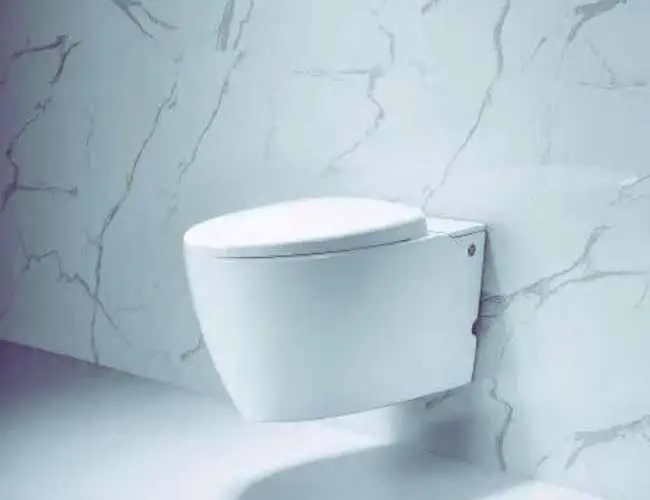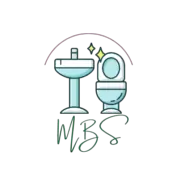Finding yourself with a toilet to flush but no running water to operate the flush mechanism is problematic. Tankless toilets, lacking the large overhead water tank, require special techniques for continuing sanitary operation when the water supply becomes disrupted.
Understanding how to flush a tankless toilet without water properly is a valuable skill for any homeowner. This article will provide a simple, step-by-step guide for performing manual flushes on your tankless toilet using collected water even when your home’s plumbing is out of commission.
While it does require some physical effort to pour and plunge, flushing your tankless toilet without a working water supply can be straightforward with the right preparation and process. Expect to use around 1 to 3 gallons of water per manual flush and allow repeated cycles to fully clear the toilet bowl.

Why Do I Need to Flush My Tankless Toilet Without Water?
While we often take functioning plumbing for granted, there are a variety of situations when the water supply to your toilet may become disrupted, affecting your ability to flush. Tankless toilet models require manually adding water to flush properly when typical water pressure is unavailable. Here are common reasons you may need to learn this manual flushing technique:
- Frozen or burst pipes during cold weather spells:
- Pipes exposed to exterior walls or attics can freeze
- This halts water flow to the toilet
- Frozen sections may burst when thawing, requiring repair
- Required maintenance to home water system:
- Valve replacements, meter checks, pipe fixtures
- Water supply needs to be turned off temporarily
- General household plumbing issues:
- Leaks, clogged drains, pump failures
- Problems anywhere in the plumbing system can affect overall water supply
- Area water service disruptions:
- Construction work
- Natural disasters
- Emergency infrastructure repairs
- Conservation necessity during droughts:
- Water restrictions can mandate cutting back on flushing frequency
- Manual flushes use less water than regular operation
- Off-grid situations:
- Recreational vehicles, cabins, etc. may lack connected water sources
As you can see, there are many reasons why you could be faced with the need to flush your modern tankless toilet despite not having normal water flow functionality. Being prepared with an emergency plan prevents unsanitary and unpleasant consequences.
What Should I Have On Hand to Flush Without Water?
When your tankless toilet loses its standard water supply, you’ll need to draw water from another source to pour into the bowl manually. Having equipment ready ahead of time makes this process far easier. Assemble a dedicated emergency kit with these items:
- Buckets – At least two sturdy plastic buckets, preferably 2–5 gallon capacity models. These transport and hold water for manual flushing. Mark one for “dirty” water draining from the toilet so contamination stays separate.
- Large containers with pour spouts – Jugs, pots, or other vessels that hold 1 to 5 gallons to ferry water from its source to the toilet site. Spouts allow controlled pouring. Label “non-potable” if used for flushing.
- A heavy-duty plunger – Provides the plunge-and-pull suction when water alone doesn’t fully clear the bowl. Look for a large, industrial style model designed for extra force.
- Water source – Plan how you will access an alternate short-term water supply, such as stored rain barrels, home hot water heater, or transported jugs from offsite faucets. Conserve overall use the best you can.
- Latex gloves – For sanitary handling while manually flushing the toilet. Reduce direct contact with equipment and waste.
- Disinfecting products – Bleach, antimicrobial wipes, and cleaning brushes to thoroughly disinfect all flush equipment, gloves, and hands after use.
Place your emergency tankless toilet flushing kit somewhere easily accessible. Maintain and replace any aging supplies so they are ready immediately whenever issues arise cutting off your normal water access. Prepare backup water as well. Advance readying lets you flush manually at the critical moments a tankless toilet would usually fail without its water feed.
How Much Water Do I Need to Flush Manually?
When transitioning your tankless toilet to emergency manual flushing mode, one key question is exactly how much water gets used per flush. Tankless models require less water overall than outdated tank-style toilets. But manually simulating their compressed flushing action still calls for gathering an adequate supply.
The amount of water needed varies slightly by the specific tankless toilet make and model. But in general, the average manual flush for clearing tankless bowl contents uses 1 to 3 gallons per attempt. Compare this to old fashioned models with toilet tanks holding 3 to 5 gallons just waiting to surge out. More specifics:
| Toilet Type | Water Per Flush |
|---|---|
| Conventional tank toilet | 3-5+ gallons |
| Modern low-flow tank toilet | 1.6 gallons |
| **Tankless pressure-assisted | 1-3 gallons** |
| Composting (no water) | 0 gallons |
Conserving water is especially critical if drawing from limited reserves during infrastructure shutdowns. Prepare to make every manually transported gallon count when pouring into your tankless bowl:
- Start with lower end of range (1 gallon)
- Increase carefully if needed for clearing
- Multiple smaller flushes may work better than one large attempt
Getting by with the minimum sufficient water prevents depleting your emergency supply too rapidly. Just realize that manually replicating the pressurized rush of your toilet’s normal water jet may demand repeating the make-do pour-and-plunge flushing process 2 to 3 times before solids fully clear.
What is the Process for Manually Flushing?
When water flow is disrupted, successfully flushing your tankless toilet relies on using muscle power to pour makeshift water reserves into the bowl along with applied plunging motions. Follow this process for best results:
- Assemble flushing equipment – Place needed items like buckets, water containers with pouring spouts, plunger, gloves conveniently by toilet area. Keep disinfectant spray and paper towels or wipes within quick reach as well.
- Transport water to toilet site – Scoop or pump water from your short-term backup supply using jugs, pots, or buckets. Carry filled pouring containers carefully to bathroom. 1-3 gallons pre-floor should be enough.
- Pour water forcefully into bowl – Rapidly dump all containers directly into toilet bowl one after another so water swirls. This fluid helps carry away waste versus dry plunger friction alone. Add cleaner water afterwards.
- Plunge vigorously – Immediately use heavy-duty plunger to direct suction around entire toilet bowl multiple times. Work vigorously in vertical and angled motions to break up waste matter so it flushes out through the trap.
- Repeat cycle if needed – Evaluate toilet bowl drainage after plunging. If not fully cleared, quicky pour in some cleaner reserve water, then plunge again intensely. Persistence pays off.
- Disinfect equipment – Before storing, use bleach solution, antimicrobial wipes, or other sanitizing products as directed to fully clean plunger, buckets, jugs, gloves, and any contacted surfaces. Wash hands carefully as well.
While a bit crude, perfecting this manual process keeps your tankless toilet functioning for sanitation needs if temporarily bereft of piped-in water convenience we often take for granted. With planning and practice, anyone can learn the art of flushing minus actual water flow. Stay clean and healthy even in compromised household plumbing situations.
Conclusion
As we’ve explored, knowing how to flush a tankless toilet without water is an indispensable skill when plumbing issues arise cutting off the standard water lines.
While tankless models rely on pressurized flows for their normal, efficient operation, homeowners can temporarily simulate flushes by collecting replacement water sources and putting some back muscles into pouring and plunging motions. Expect the process to be messy and require repeated cycles before waste fully clears from the bowl each time.
But committing to the preparation, equipment, understanding proper techniques, safety, and disinfection detailed above allows you to successfully handle bathroom business as usual, even when your high-tech tankless toilet loses its high-pressure water feed.
Keeping sanitation dependably operational prevents bigger household headaches down the road by planning ahead for those inevitable dry-flush days.
